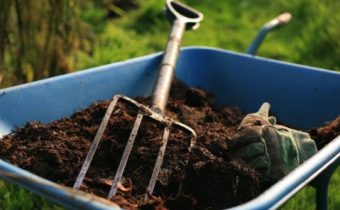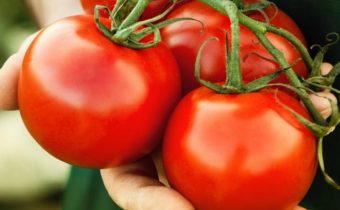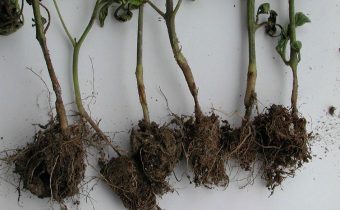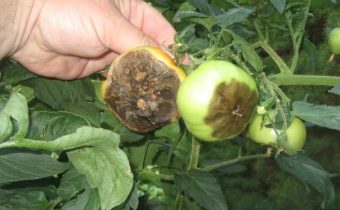Why do green tomatoes rot in the bushes in the greenhouse, and how to save the crop?
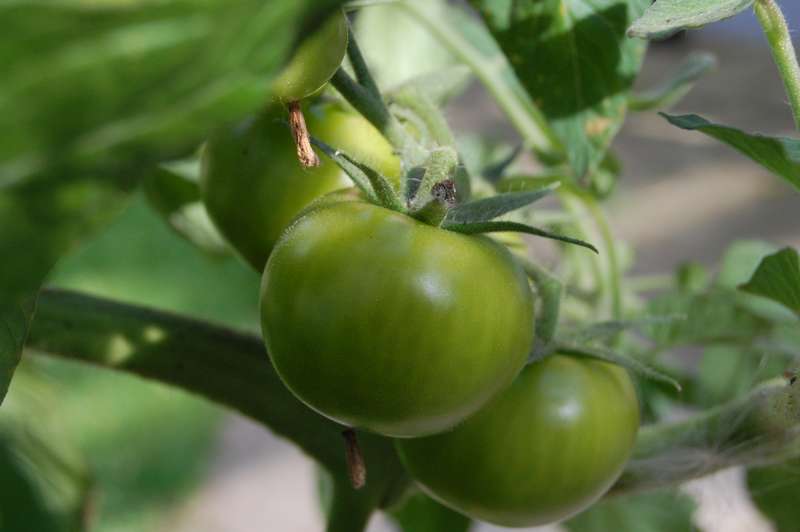
Diseases of tomatoes in closed ground phenomenon is quite frequent. And one of the most common problems is rotting the crop. Why do green tomatoes rot in the bushes in the greenhouse, and how to save the crop? Agronomists are beginning to look for answers to these questions, since not only products for the family are at stake, but often for sale. Let's understand.
Types of rot on tomatoes
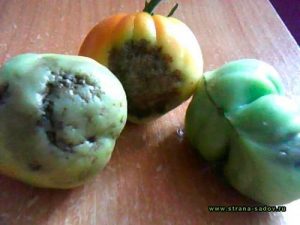 Disease can be of different types, but not all rot develops on the fruits. If you do not begin to act actively and quickly, the disease will hit all the fruits, and the harvest will die. In addition, there are varieties that are easily transferred to other cultures, and in greenhouse conditions, infection begins to occur very quickly. So, the types of rot are as follows:
Disease can be of different types, but not all rot develops on the fruits. If you do not begin to act actively and quickly, the disease will hit all the fruits, and the harvest will die. In addition, there are varieties that are easily transferred to other cultures, and in greenhouse conditions, infection begins to occur very quickly. So, the types of rot are as follows:
- gray rot
Very dangerous species, spreading quickly. It affects the stem first, the cause of its fungus. The disease spreads throughout the bush, and soon it dies, as does all the fruits. May affect other cultures and very quickly;
- white rot.
This variety is dangerous because it does not save the crop. The most common infection occurs through soil, fertilizer or compost. On the fruit and the bushes themselves there are spots that get wet, smell unpleasant;
- brown rot.
It has a second name - fomoz. Most often, the tomato begins to rot near the stem. Usually occurs after watering fresh manure. The spot may be small, the gardener does not pay attention to it, but inside the fruit rots completely;
- peak rot.
Tomatoes occur frequently, treatment can save the crop, because the disease does not spread quickly. There is a stain at the bottom of the tomatoes, which becomes a signal that the disease has begun. The main symptom is that the fruits begin to rot even more green. One of the most common diseases.
See also: Why do tomato leaves turn yellow in the greenhouse and how to deal with it?
Causes of rotting tomatoes
There are a lot of them:
- contaminated soil;
- wrong watering mode;
- too high humidity;
- poor processing of the greenhouse before planting crops;
- careless handling of bushes when wounds appear on them, which provokes infection;
- nutritional deficiencies;
- infected seeds;
- excess fertilizer;
- dry soil;
- soil acidity.
How to process tomatoes from rot?
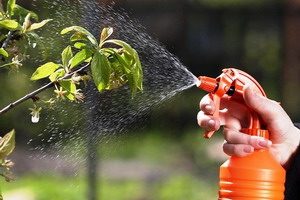 So these are the main types of rot and their causes. As you understand, a lot depends on the correct methods of agricultural technology. You have to watch out for ground cleanliness, it must be sterile. Before planting, you need to spill the earth with boiling water with manganese, try to change the soil in the greenhouse. You also need to disinfect and purchase soil. It is good to help improve the quality of the earth, the ash scattered on the plot, it is also necessary to remember about the presowing treatment and always to know.
So these are the main types of rot and their causes. As you understand, a lot depends on the correct methods of agricultural technology. You have to watch out for ground cleanliness, it must be sterile. Before planting, you need to spill the earth with boiling water with manganese, try to change the soil in the greenhouse. You also need to disinfect and purchase soil. It is good to help improve the quality of the earth, the ash scattered on the plot, it is also necessary to remember about the presowing treatment and always to know.
Of course, you must keep the greenhouse clean, like the crops themselves. They should not be overgrown with stepchildren, weeds. The removal of the former is best done early in the morning or in the evening, so the wounds will quickly retard and infection will not occur. It is also necessary to monitor the cleanliness of hands, as well as the walls and floors in the greenhouse. After all, fungi live everywhere. Remember about prevention - do not quit your job if you were able to quickly cure the tomatoes or simply remove the diseased fruit.Treat even healthy bushes and fruits, but use sparing methods, folk or natural preparations, so as not to save chemistry in vain.
See also: Top dressing tomato during flowering and fruit set
If we talk about the wrong underfodder, then very often summer residents make a mistake and water it with infusion of fresh manure, because they heard that tomatoes love it. This is a mistake that often leads to illnesses. An excess of nitrogen can also adversely affect the condition of the fruit. Fertilizers should not be abused, and if your tomatoes have already begun to rot, then they need complexes that contain calcium, boron, phosphorus, manganese and zinc. The first two should be required. Sub-feed is usually introduced two weeks after transfer to the greenhouse, and so on - about once every 10-14 days.
Speaking of folk methods. You can take the following measures to save the harvest:
- 80 grams of table soda diluted in boiling water, then cool and spray the area;
- 5 grams of copper sulfate diluted in a bucket of water and also spray the bushes;
- pour the area with ashes or chalk, or dolomite flour, or lime to reduce pathogenic flora and soil acidity;
- grate tar soap, dissolve in warm water and spray the bushes;
- spray bushes with boric acid 1% and calcium nitrate - 50-70 grams per bucket of water;
- shed bushes under the root of the infusion of ash - a liter of ash in a bucket of water, insist day.
Also, plants need good immunity so that they can fight the disease. For this it is useful to use growth stimulants - "Epin", "Gumifid", "Zircon". Remember the correct dressings, which also give strength to the culture - the advantage of potassium, phosphorus, calcium, boron, manganese in the composition.
Important!
Before using any means, always consider that there are biological and safe preparations for your health, and there are chemicals. They accumulate in the fruit and can lead to poisoning.
With regards to different store chemical products, gardeners most often use Topsin M, Bayleton, Euparin Multi, one of the leaders is Brexil Calcium. Barrier, Alirin, Fitosporin and Gamar can be added to the soil.
See also: Tomato varieties with photos and descriptions
Now you know why green tomatoes rot in the bushes. There are many reasons, actions too, the main thing is to do everything on time. If you do not have time, then it is better to choose more sustainable ones next year. varieties, hybrids.
Inspect your plantings more often, take care of them in a timely manner, then you will get by with illnesses, and the harvest will delight in the greenhouse for many months.


